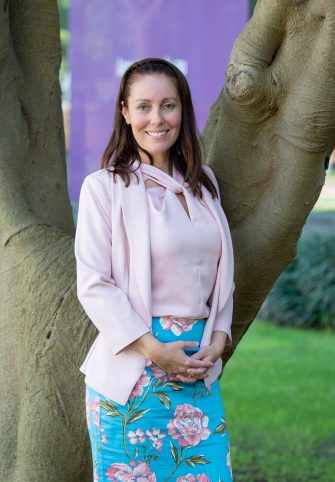
Facts & figures



Australia’s approach to medical injury is expensive, ill-fit for purpose and rarely meets patients’ needs, says a health law expert from UNSW.
Associate Professor Jennifer Schulz (formerly Moore) from UNSW Law & Justice is calling for the urgent reform of Australia’s response to medical injury. Medical injury occurs when a health care professional or provider fails to take reasonable care to prevent patient injury or death through negligence, error or omission in practice. Traditional dispute resolution processes, (such as medical malpractice litigation) available to injured patients, tend to be adversarial in approach. Australia’s continued reliance on these is out of step with leading research recognising the advantages of patient-centred alternatives, says A/Prof. Schulz.
“Australia is lagging behind international counterparts, such as New Zealand and the United States of America, in investing in non-adversarial approaches to medical harm resolution,” the health law expert says. “Alternatives, such as no-fault schemes and communication-and-resolution programs, offer opportunities to place patients’, families’ and providers’ values at the forefront of resolution efforts.” While Australia does offer open disclosure to patients harmed in healthcare, the process is less comprehensive, she says.
“Research has shown no-fault schemes are more cost-effective than medical negligence. They provide much-needed compensation more readily to patients injured by healthcare and they align with the values of a patient-centred, safe and compassionate healthcare system,” she says.
The research is very clear that we should be moving on from medical negligence and looking to adapt one of these patient-centred systems to the Australian context. Understanding the perspectives of injured patients and their families is crucial to improving the way the health system responds to their needs.
Associate Professor Jennifer Schulz
A/Prof. Schulz has qualifications in public health medicine and law and specialises in empirical health law. She works with patients and their families, health providers (from practitioners to patient liaison officers, risk managers and CEOs) and legal representatives to better understand medical injury. Her research in collaboration with global experts, particularly Professor Michelle Mello at Stanford University and Professor Marie Bismark at University of Melbourne, has led to improvements across international models.
Her call for medical injury reform comes as Prime Minister Anthony Albanese declares health reform the national cabinet’s top priority and federal and state ministers meet to discuss plans to radically overhaul Medicare. The Strengthening Medicare Taskforce report, established in July 2022, has revealed Medicare is in “the worst shape it's been in its 40-year history,” Health Minister Mark Butler says, with GP shortages, rising out-of-pocket fees, lengthy waitlists and overloaded public hospitals. International experts in medical negligence have highlighted that alternative dispute resolution processes for medical injuries work best in countries with “safety nets” like Medicare.
Medical error remains one of the leading causes of death globally with a heavy burden on health and legal systems. In Australia, as many as 18,000 people die every year because of medical error; about 50,000 people suffer a permanent injury. Medical injury includes medical error and other types of harm in health care, making the burden of morbidity and mortality even greater; its impact on the lives of injured patients and their families is untold, A/Prof. Schulz says.
"Medical injury can be a deeply traumatic experience for patients and their families, with serious physical, psychological, financial and social impacts. [Malpractice litigation and other] adversarial forms of dispute resolution involve considerable stress, potentially retraumatising families and health care providers," she says.
“[Litigation] is a poor mechanism for meeting injured patients’ needs for information, corrective justice, and reconciliation. It's also terrible for the practitioners [involved] who are referred to in the research as the second victims,” she says. “Additionally, research has shown that malpractice suits disproportionately disadvantage marginalised groups, further exacerbating inequities within our health care system.”
Avalon was 14 years old when she almost died due to an overdose administered in care. She was left with extensive ongoing trauma and health conditions. A lack of acceptable ‘proof’ meant she was compensated for her hair loss, PTSD and anxiety, but not her emotional damage. Plus, she was excluded from communications post-event because of her age.
When she participated in A/Prof. Schulz’s research, four years after the event, she hadn’t received an apology.
I’ve never seen that collection of doctors and nurses ever again and that upsets me. There’s just been little to no closure.
Avalon (Research participant)
Having the opportunity to discuss her experience of the harm event through the research and receiving an apology, brokered by A/Prof. Schulz, has allowed her to “move on”, Avalon says; she is now studying to be a physician’s assistant.
Prioritising the patient voice improves resolution processes and health care
Australia’s open disclosure policy requires health service organisations to acknowledge, explain and apologise for medical errors as well as allowing patients to relate their experience, and discuss consequences and future prevention efforts. However, Australian research has demonstrated that disclosure processes rarely meet the needs of injured patients and their families, A/Prof. Schulz says.
Poor responses from health care providers can exacerbate the effect of adverse events for injured patients and their families, her research has shown. Rather than holding health care providers to account, the litigation model encourages defensive clinical practice, harming patient-provider relationships and undermining patient safety learnings, she says.
[Patient-centred alternatives] allow us to put things in place to help prevent, or minimise, harm from happening again, which is what patients say that they want after they experience harm.
Associate Professor Jennifer Schulz
“They allow patients to be heard, they facilitate proactive and early offers of compensation, and they allow for non‐adversarial discussions, needs that are often unmet but integral to delivering reconciliation with compassion.”
Time to follow international footsteps
Non-adversarial responses to medical injury are not new. New Zealand underwent system-wide reform in the 1970s, moving from punitive litigation to a no-fault compensation scheme. Injured patients may receive government-funded compensation after a patient safety incident. “This encourages a culture of reporting and continual patient safety improvement,” A/Prof. Schulz says.
In the US, where the legal and health care systems make holistic reform challenging, health care institutions including Stanford Health Care and Beth Israel Deaconess Medical Centre (a Harvard hospital) have developed communication-and-resolution programs (CRPs).
“In CRPs, hospitals and liability insurers communicate with patients about adverse events, use findings to improve patient safety and offer compensation, preventing the need for litigation,” she says.
The United States Agency of Health Care Research and Quality (AHRQ) is scaling up CRPs in response to A/Prof. Schulz’s research. They have recognised the Medical Injury Reconciliation Experience Survey (MIRES) developed by A/Prof. Schulz in partnership with injured patients and international experts.
The survey and research recommendations have been implemented by many participating providers in New Zealand and the US. “Incorporating the MIRES into their workflows can help healthcare organisations better understand how well they are meeting patients’ needs.”
The UK is also considering replacing medical negligence. A/Prof. Schulz is advocating for the UK to leverage insights learnt from the New Zealand and US models.
Australia should also reconsider our response to medical injuries to harness the strengths – and improve on the challenges – of existing alternative resolution approaches, she says. A no-fault scheme would be preferable, she says; while it would require an overhaul of our existing system, the current reform of Medicare provides an apt opportunity, she says.
“Some of the components [needed for a no-fault scheme] are already in place in Australia, such as open disclosure, and the public health care system would make it possible to get off the ground,” she says. “It would be a matter of public appetite and political will.” It would also be possible to introduce CRPs in Australia, and comparatively easier than wholesale system reform to accommodate a no-fault scheme, she says.
Recognising patients as partners
A/Prof. Schulz is also advocating for greater research engagement with patients who have experienced harm to better understand their lived experience of patient safety incidents. The fear of retraumatising patients [ethical concerns] or provoking lawsuits [medico-legal concerns] contributes to institutional resistance that has slowed research to understand how responses to injury can better meet patients’ needs.
“[However,] health care providers have an ethical obligation to engage in quality‐improvement activities, particularly those that may help them avoid harming patients or mitigate the harm they do cause.” Further, her research suggests that the positives of providing patients with avenues to discuss their experience outweigh these risks, prompting many participating institutional review boards to reconsider their exclusion.
“Patients should be part of the team for resolving harm in health care,” A/Prof. Schulz says. “Prioritising their needs is critical to ensuring our health care system is safe, equitable and compassionate, and that it leaves no one behind.”

